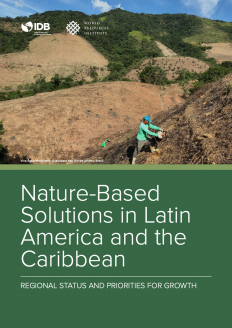Nature-Based Solutions in Latin America and The Caribbean: Regional Status and Priorities for Growth
October 2021

As the world recovers from the global recession and pandemic, investment in development projects and infrastructure is poised to surge. But channeling that investment into traditional infrastructure, often built with concrete and steel, risks accelerating greenhouse gas emissions, climate change, environmental degradation, and biodiversity loss. This means that many proposed carbon-intensive recovery investments are more likely to deepen inequality and undermine future economic growth.
Yesterday’s infrastructure strategies cannot protect communities and economies from today’s multiplying threats. Governments, investors, and infrastructure service providers have other options: nature-based solutions, or investments in the strategic restoration, protection, or management of ecosystems. An NBS investment can often benefit multiple sectors and communities.
This brief focuses on NBS that target specific infrastructure goals such as protecting or enhancing water supplies and reducing the risks of floods and landslides. NBS may be implemented on their own or integrated into traditional “built” infrastructure systems, which is often referred to as green-gray infrastructure. Green-gray infrastructure is a subset of NBS that strategically preserves, enhances, or restores elements of a natural system to deliver infrastructure services that are better, more resilient, and less expensive. Unlocking investment in NBS is critical to accelerating progress.
To help chart a pathway forward, this issue brief examines the status of NBS efforts and results in the region to shed light on obstacles to progress and ways to overcome them. It is the first regional review of NBS projects, their status, and implications for investment. The review examines key sectors (i.e., water and sanitation, housing and urban development, energy, and transportation) and investment objectives (improved water quality and supply, flood risk mitigation, and landslide risk and erosion). It presents the current baseline of NBS adoption in Latin America and the Caribbean, drawing on a dataset of 156 projects identified in 2020.
This brief is one in a three-part series of knowledge products that aims to set an agenda for key decision-makers and investors for why and where in the region to invest in NBS and to provide guidance on how to set enabling conditions for scaling.